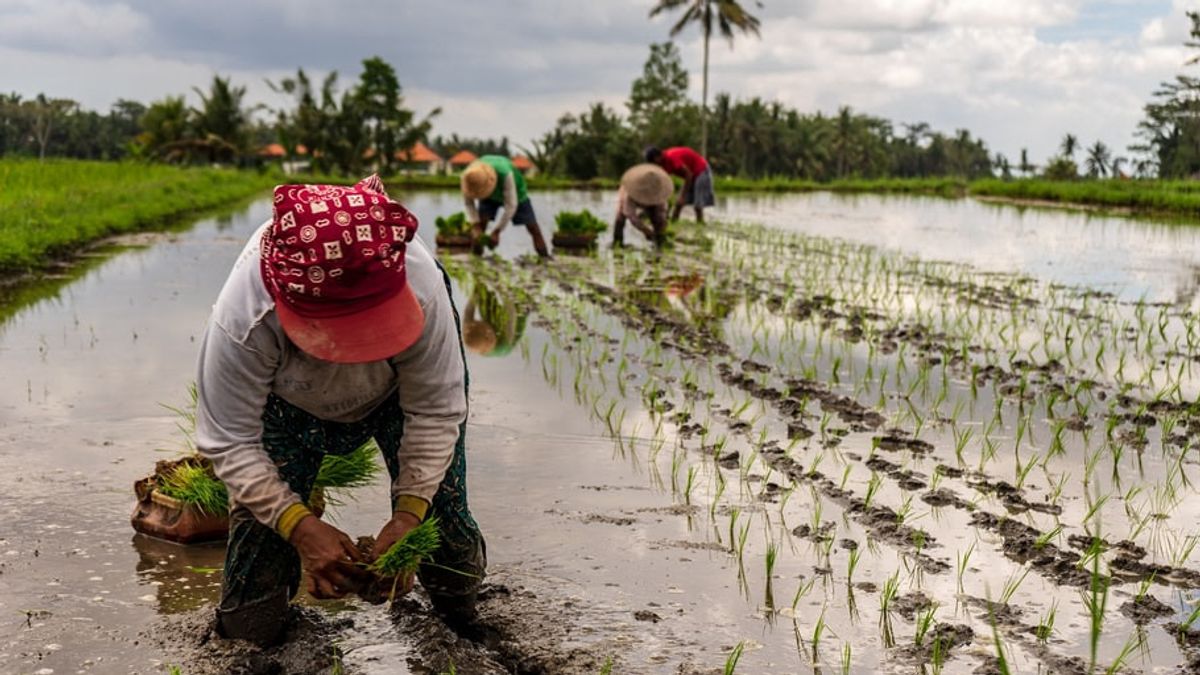JAKARTA - Center for Indonesian Policy Studies (CIPS) researcher Indra Setiawan said easing barriers to rice trade needs to be done to meet the increasing national rice consumption. Despite claims that Indonesia's rice supply is plentiful and accessible at affordable prices, Indonesians still struggle with high rice prices.
For your information, in the Regulation of the Minister of Trade Number 57 of 2017 it has been regulated that the highest price for rice is set at Rp9,450 per kilogram (Kg). Meanwhile, for medium rice and Rp. 12,800 kg for premium rice.
Indra said Indonesia is one of the largest rice consumers in the world. National rice consumption per capita in 2017 was 97.6 kg and is estimated to increase by 1.5 percent per year to 99.08 kg per capita in 2025. This increase occurs in line with the rate of population growth.
Indonesia's population was recorded at 264 million people in 2018, an increase of 1.27 percent from 2017. Thus, ensuring the availability and affordability of rice is essential to meet the needs of a growing population.
Currently, said Indra, domestic rice productivity is not high enough to keep prices stable in the face of Indonesia's increasing demand. Seasonal rice productivity has fluctuated since 2013, reaching an average of only 5.19 tons per hectare per year.
While the government claims that domestic rice yields have increased every year and often produce a domestic rice surplus, they continue to consistently import rice from abroad.
"Of course this contradicts claims that domestic production can meet domestic demand. Together with long supply chains and inadequate infrastructure to cover the vast distances of the Indonesian archipelago, they contribute as a major factor to high rice prices, namely logistics costs. ," he said, in Jakarta, Friday, August 13.
Indra said reducing trade barriers will be one solution to reduce prices when domestic needs are insufficient, because rice from abroad is cheaper and will open up healthy competition.
The reason for the high price of riceIndra said the high price of rice was exacerbated by import tariffs and quantitative restrictions imposed on rice. A tariff of Rp450 kg is applied to all types of imported rice, as regulated in Minister of Finance Regulation Number 6 of 2017.
Furthermore, the Food Law No. 18 of 2012 prioritizes the development of domestic food crop production. The law emphasizes a ban on imports if domestic production is sufficient to meet demand.
Thus, imports only take effect when domestic demand exceeds limited supply. These regulations are intended to protect domestic producers from international markets and to prevent them from receiving low prices for their crops.
Not only tariff and quantitative restrictions, rice imports are also faced with a long process. The government has appointed the Logistics Affairs Agency (Bulog) as the sole importer of medium quality rice, which gives them a monopoly on the commodity.
Thus, said Indra, the decision to import rice can only be made after an agreement is reached through a coordination meeting between several ministries in Indonesia.
"Unfortunately, it takes a relatively long time to make a final decision because of the lengthy analysis of the problem, the differences in the interests of each ministry, and the dilemma of food data, which still encounters differences between agencies," he said.
For example, said Indra, to determine the import quota needed to anticipate consumption demand and to reserve stock for the predicted dry season. In the end, rice imports are still very dependent on the President's green light to be enforced.
In addition, Indonesia needs to consider not only affordability, but also the diversity of the rice market. Regions have different rice preferences. People in Java usually like to eat soft (pulen) rice.
The same preference applies to the eastern parts of Kalimantan, Sulawesi, Nusa Tenggara, and Papua, as they prefer softer rice. However, this is not the case in other areas.
While most regions in Indonesia generally prefer soft rice, there is also a preference for harder or pera rice. For example, people from North and West Sumatra as well as western Kalimantan prefer this rice. Given the diversity in Indonesia's sense of taste, rice production also needs to be increased and diversified according to local consumer preferences.
The English, Chinese, Japanese, Arabic, and French versions are automatically generated by the AI. So there may still be inaccuracies in translating, please always see Indonesian as our main language. (system supported by DigitalSiber.id)













